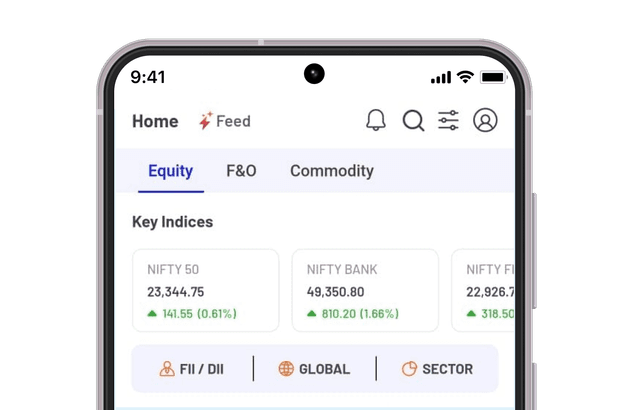15 Minutes Breakout Stocks
Last updated on: January 17, 2026
15 minute breakout stocks are stocks that experience significant price movements within a 15-minute trading window, often surpassing resistance levels. Traders use this short-term timeframe to identify quick profits or align positions with emerging trends, capitalising on short-term price movements and volatility.
4,880 | 103138.98 | 409.04 | 3285.33 | |
706.65 | 24803.42 | 244.02 | 2294.01 | |
879.50 | 16097.08 | 276.49 | 3467.02 | |
26.50 | 203.15 | -0.56 | 44.45 | |
3.28 | 51.63 | 164.22 | 234.39 | |
123 | 2546.58 | 1.92 | 362.63 | |
320.40 | 644.68 | -16.89 | 69.34 | |
6,020 | 17678.6 | 182.37 | 1551.85 | |
431 | 5012.47 | 9.86 | 1102.7 | |
17.75 | 2245.6 | -105.25 | 1157.19 | |
20,580.35 | 27117.21 | 350.7 | 2081.4 | |
950.50 | 591446.9 | 4947.76 | 19867.45 | |
420.05 | 8480.91 | 53.89 | 1670.76 | |
626.50 | 9013.5 | 138.9 | 1031.36 | |
1,530.50 | 17124.06 | -17.82 | 96.77 | |
3,639.65 | 15737.79 | 107.15 | 4042.41 | |
902.55 | 11600.25 | 13.9 | 801.33 | |
1,785.10 | 14907.48 | 48.03 | 839.09 | |
410.15 | 299810.58 | 1278.42 | 5792.09 | |
85.04 | 2116.29 | 40.45 | 325.1 | |
7.25 | 22.74 | -0.81 | - | |
133.60 | 400.8 | 0.71 | 176.07 | |
1,798.55 | 37106.27 | 98.78 | 2422.37 | |
12,084.95 | 1757.4 | 12.2 | 103.7 | |
62.10 | 304.14 | -0.19 | 19.84 | |
271.90 | 916.39 | 0.74 | 271.33 | |
155.85 | 20612.62 | 445 | 5267 | |
440.30 | 17654.74 | 648.75 | 6412.76 | |
344.35 | 29269.75 | 173.64 | 4364.51 | |
1,397.95 | 112922.38 | 1353.07 | 7447.42 |
4,880 | |
706.65 | |
879.50 | |
26.50 | |
3.28 | |
123 | |
320.40 | |
6,020 | |
431 | |
17.75 | |
20,580.35 | |
950.50 | |
420.05 | |
626.50 | |
1,530.50 | |
3,639.65 | |
902.55 | |
1,785.10 | |
410.15 | |
85.04 | |
7.25 | |
133.60 | |
1,798.55 | |
12,084.95 | |
62.10 | |
271.90 | |
155.85 | |
440.30 | |
344.35 | |
1,397.95 |
About 15 Minutes Breakout Stocks
15-minute breakout stocks are stocks that experience significant price movements within a short period of 15 minutes. These movements often involve the stock price breaking through key resistance or support levels, indicating a potential shift in market sentiment.
Identifying 15-minute breakout stocks involves analysing short-term price charts, volume patterns, and technical indicators. Traders look for clear breakout signals such as sharp price movements accompanied by high trading volume. They use this information to make timely decisions, entering or exiting positions to capitalise on short-term price movements.
How to Trade 15-Minute Breakout Stocks?
Trading 15-minute breakout stocks requires a focused and disciplined approach due to the short-term nature of the time frame. Here's how to trade these stocks effectively:
- Identify Key Levels:
Begin by identifying key support and resistance levels on the 15-minute chart. These levels represent areas where the price is likely to encounter significant buying or selling pressure. - Wait for Breakthrough Confirmation:
Pay close attention to the price movement and look for a clear breakthrough over resistance or below support. Breakouts are frequently accompanied by an increase in trade volume, indicating the intensity of the move. - Entry Plan:
Once a breakout has been established, evaluate your entry plan. Some traders prefer to join soon after the breakout, but others wait for a pullback to retest the breakout level before entering. Whatever technique you use, be sure it is consistent with your risk tolerance and trading plan. A 15 minute breakout strategy involves monitoring stock price and trading volume patterns to identify optimal entry and exit points. - Set Stop Loss and Take Profit Levels:
To prevent possible losses, place your stop loss order just below the breakout level for long bets and above it for short ones. Calculate your take profit objective depending on the size of the breakout and the degree of resistance or support beyond the breakout point. - Manage Your Trade:
Continue to watch your trade, modify your stop loss and take profit levels when the price swings in your favour. Consider trailing your stop loss to preserve profits and defend against future reversals. - Stay Disciplined:
Stick to your trading plan and avoid emotional decision-making. Be prepared to cut losses quickly if the trade moves against you, and don't chase trades that don't meet your criteria. Enter your mobile number to continue. Traders seeking 15 min breakout with high volume can identify potential short-term trading chances by monitoring stocks with significant price movements and high trading activity within 15 minutes.
